Making their way across the country, the Apache Stronghold left the San Carlos Reservation of Arizona and headed to Washington DC to protest at the nation’s Capitol. The Apache share our same enemies which are Arizona’s state representatives and the extractive industries that influence them, nonprofit or otherwise.



Judging from past experience, the caravan probably had limited time and materials to create visuals so naturally, the creative gears were already turning in anticipation of their movement’s arrival. A graffiti-style banner was created with Apache Leap incorporated into the negative space. This was made for the Apache Stronghold’s welcoming to Washington DC and to be used in their actions moving forward. Sadly this artwork would be stolen from their movement a few days before their action at the Capitol. Its whereabouts remain unknown.
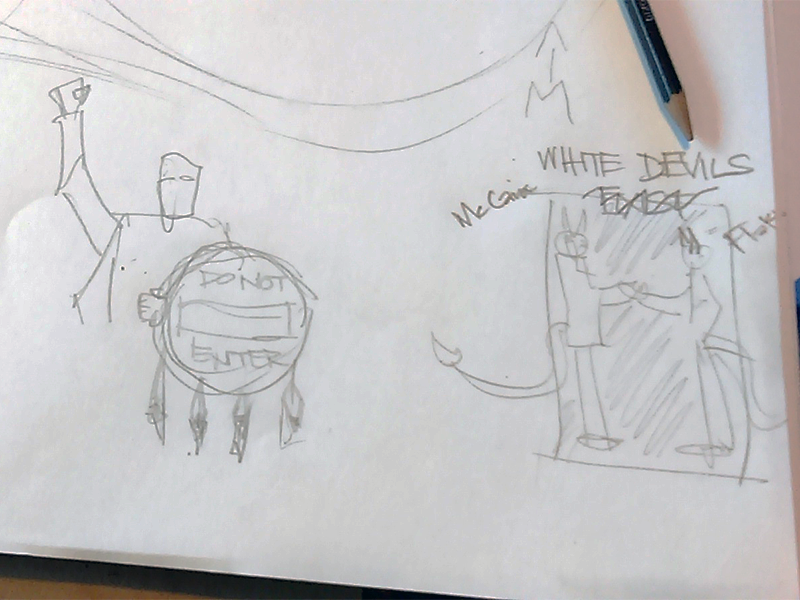

Reclaiming a warrior heritage was the goal when formulating ideas about their defense of their people, land and culture. Shields made the most sense to create and giving Indigenous people tools or in some cases, weapons to stimulate and trigger muscle memory is never a bad thing and should be advocated for whenever possible. Since the colonial government has never understood words such as “sacred” or “holy”, these shields were made to use the colonizer’s own language and symbols against them.




These warrior shields were inspired by Lozen, a skilled warrior and a prophetess of the Apache. She was the sister of Victorio, a prominent chief. According to history, Lozen was able to use her powers in battle to learn the movements of the enemy.
“Lozen is my right hand … strong as a man, braver than most, and cunning in strategy. Lozen is a shield to her people.” – Victorio, Apache Chief
We opened up every art session in a prayerful manner sharing songs and thoughts from the heart about our future endeavors. The visuals were broken up into assigned teams and sections to facilitate the completion of the different elements of the art build.
Screen printing and other street art techniques mass-produced shields, banners, shirts, door hangers, stickers and large prints for wheat pastes. After developing the Do Not Enter Sacred Land Shield prototype, I broke down instructions and dropped off stacks of completed art so that the rest of the Apache Stronghold staying in town could complete their own shields.
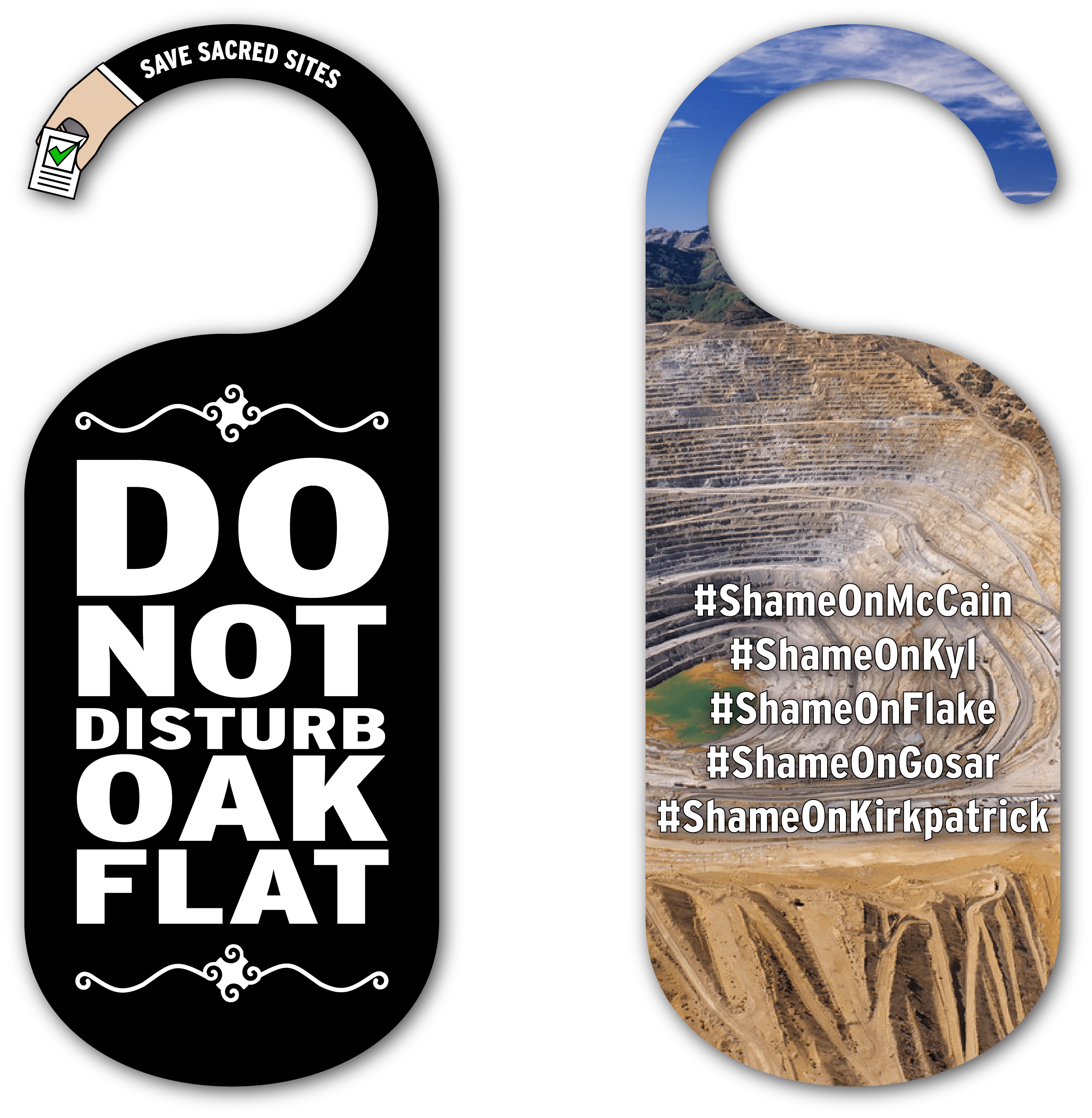

There was going to be a contingent of Apache who would be going to the offices of John McCain, Jeff Flake, John Kyl and Ann Kirkpatrick on the day of action at the US Capitol. Knowing these representatives would be hiding or absent, I designed some door hangers to be hung on the handles of their offices. What made sense situationally was using the Do Not Disturb door hangers from hotels and adding a few personal touches. Utilizing the curvature of the hanger portion, I designed it as a voting arm holding a vote for saving sacred sites in terms of supporting HR. 2811.
A White Devil banner was also created as well using stencils of McCain, Flake and Kirkpatrick complete with horns and tails. A hummingbird banner with Oak Flat art and messaging was also created which many artists threw down on.



Working fifteen hours a day for four days straight took no fire from the BIPOC artists despite the night before the action when Washington DC was hit with a citywide blackout. Growing up some of us from the reservation had no electricity anyway so this First World comfort wasn’t going to stop progress.
Overall the success of the demonstration at the US Capitol was seeing how art can be an effective tool for unity, strength and empowerment. That day, I saw Apache in full regalia with staffs and spears. That day, I saw both young and old dancing, singing, and standing proud together in defiance within the belly of the beast. That day, I saw a glimpse of the spirit of Lozen.
*many thanks to 2B Studios of DC. It was inspiring to witness the movement building between BIPOC locals, Zulu Nation and down-ass white allies. Much Love.


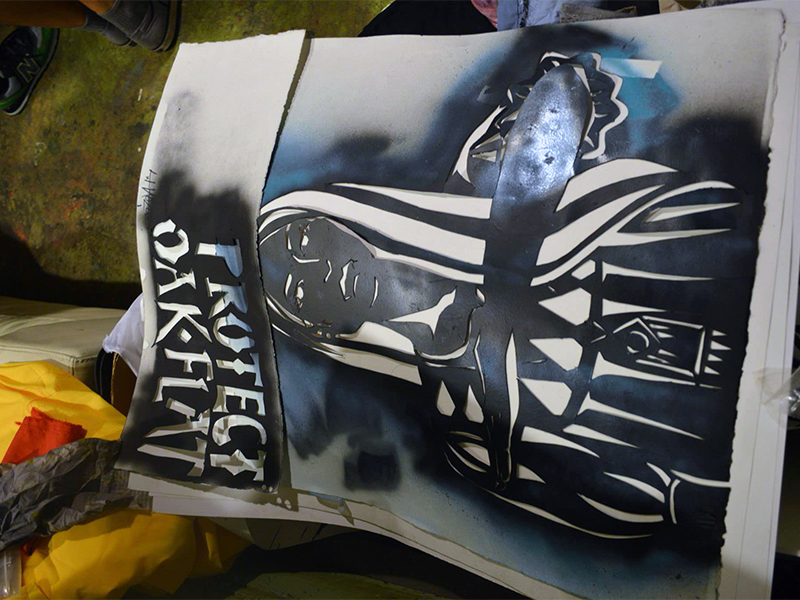
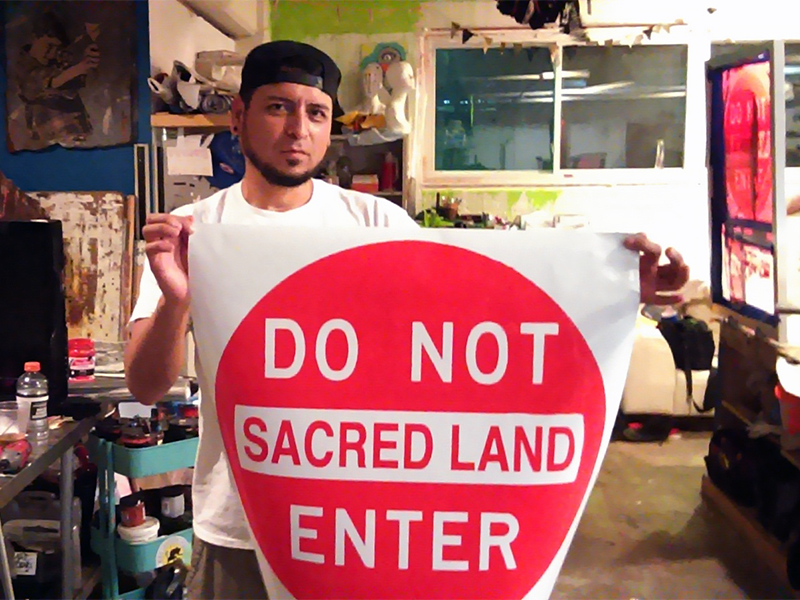

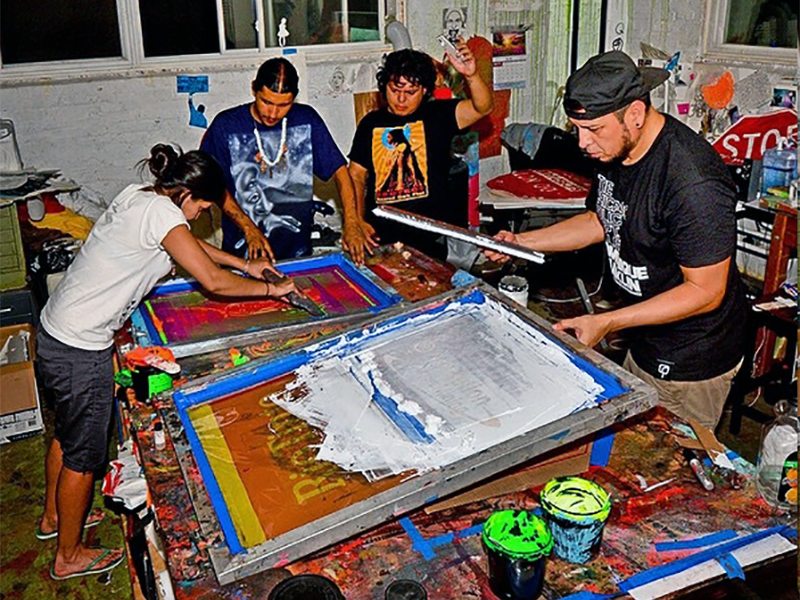

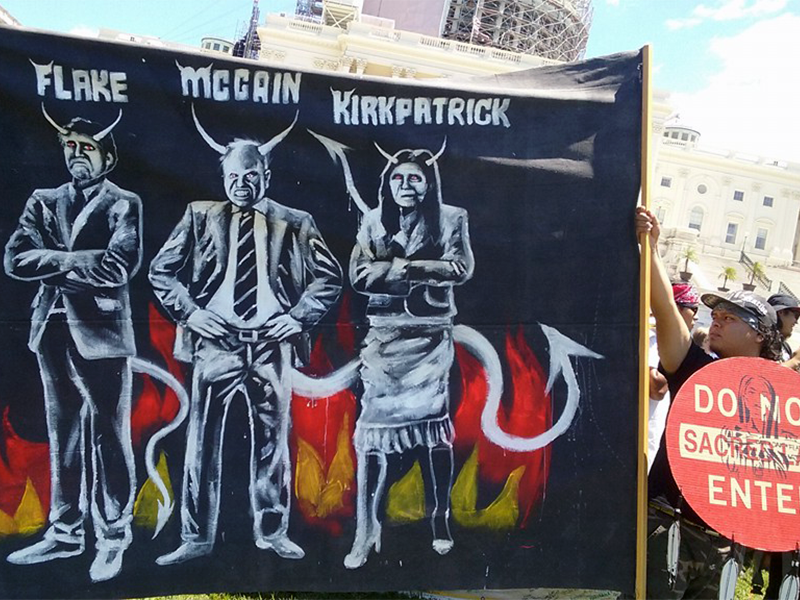
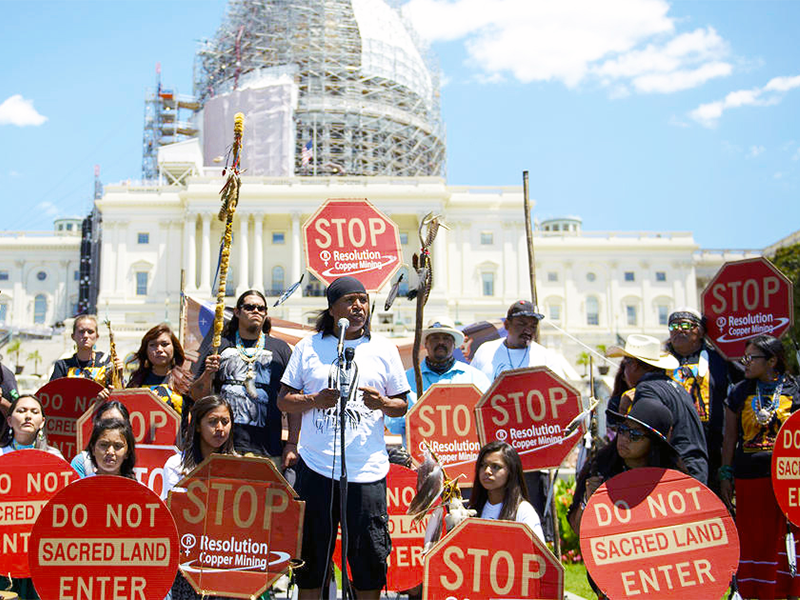
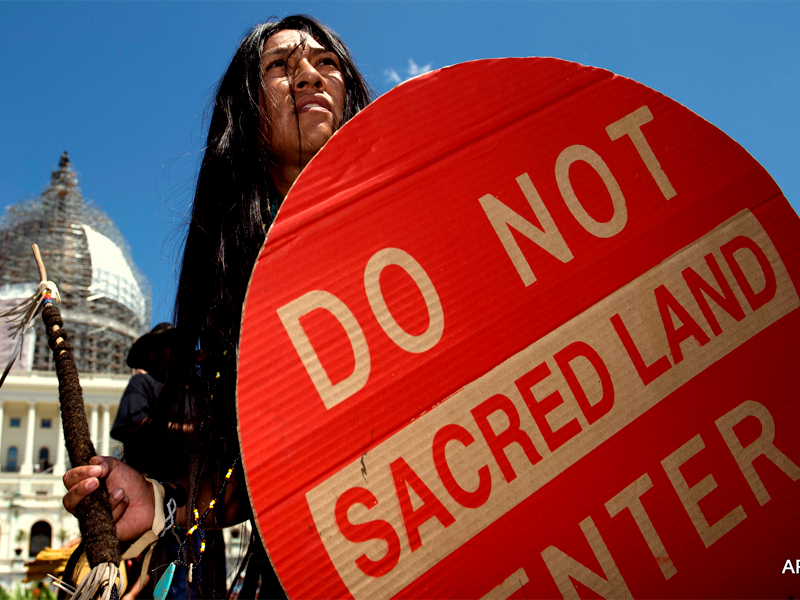
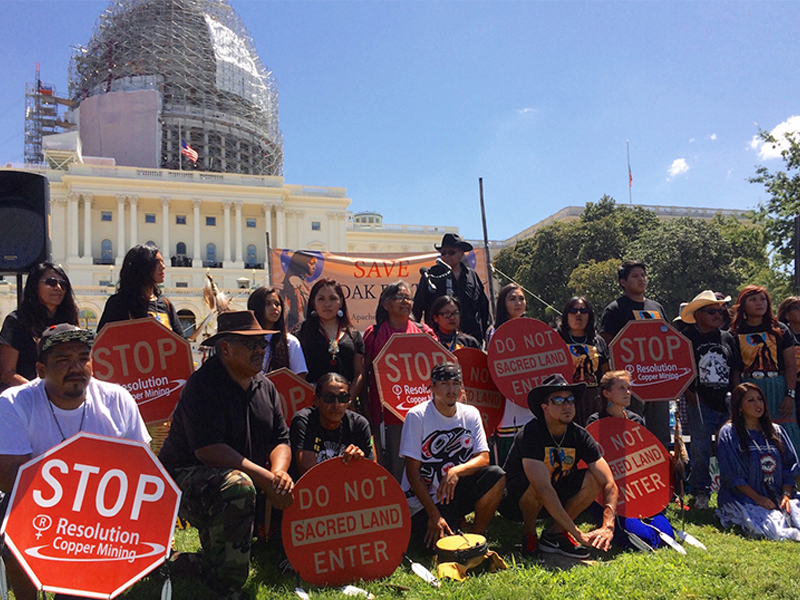


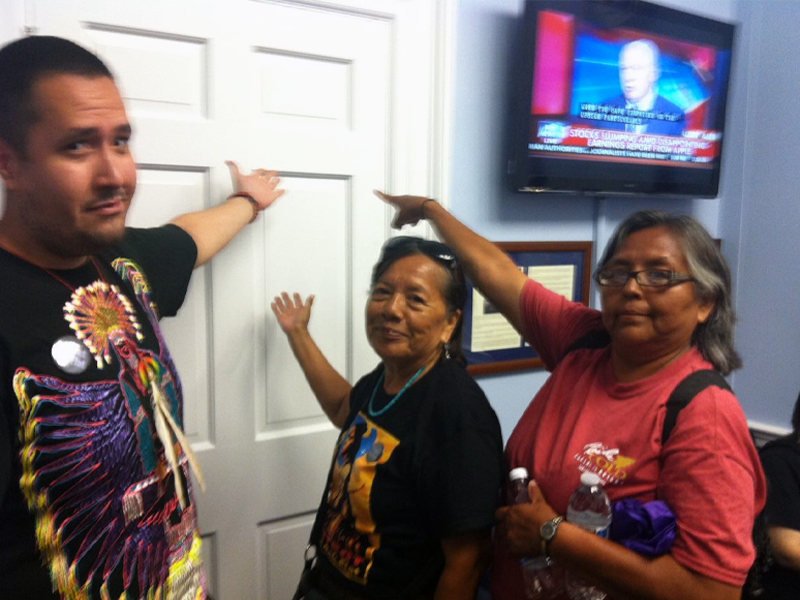

Comments are closed.